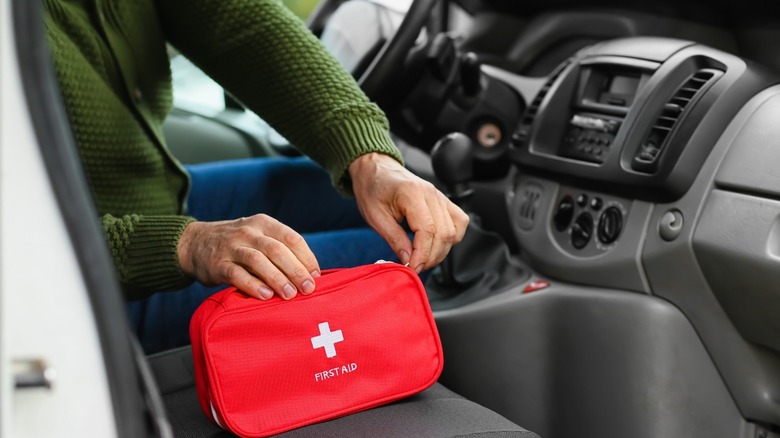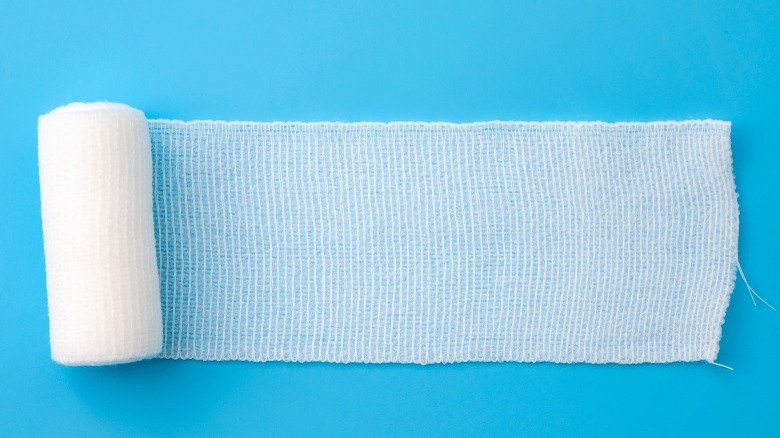What To Do If You Cut A Vein
Blood is a life-giving force. According to the Cleveland Clinic, the body's circulation of blood ensures that all of the muscles, organs, and tissues are healthy and functioning properly.
However, there's a pressing fact about human life — we all bleed. When you cut a blood vessel, your beating heart continues to pump blood. That means you will continue to bleed from the cut until the damage is sealed (via The Conversation).
A severe cut might sound like the type of injury that only affects athletes or chefs. However, emergency physician Dr. Troy Madsen told the University of Utah Health that the three most common reasons why people end up in the emergency room due to cuts are cooking with a knife, falling, and working with power tools.
At this point, you might be wondering how much blood you can lose before it becomes fatal. According to Healthline, the average adult can lose around 14% of their blood before they even feel any side effects or show marked changes in their vital signs. Somewhere between a blood loss of 30-40% may result in a loss of consciousness. Lose any more blood than that, and the results could be fatal (via Healthline). That being said, how should you treat a cut vein?
How to treat a cut vein
Avoiding blood loss by applying pressure is one of the golden rules of first aid, but there are a few things to consider before you jump into it.
If the cut is located on or near your extremities, it may help to elevate the wound above your heart (via MedicalNewsToday). Additionally, it is important to fully uncover the wound. According to Healthline, if your cut is partially or fully blocked by an article of clothing or an accessory, you will want to remove it to entirely expose the cut. It also helps to have some sterile gauze or a clean cloth on hand.
When you are ready to treat the wound, cover it — either directly with your hand or your sterile cloth — and apply pressure for five minutes (via Healthline). If the bleeding stops, cover the wound with more clean gauze. If the bleeding does not stop, you have a few options.
According to Healthline, you can apply another layer of clean gauze directly over the first one and apply more pressure. Another last-ditch option is to apply a tourniquet above the wound (via MedicalNewsToday).
Remember, while cuts can heal themselves, you should always seek emergency medical care if your cut does not stop bleeding.


